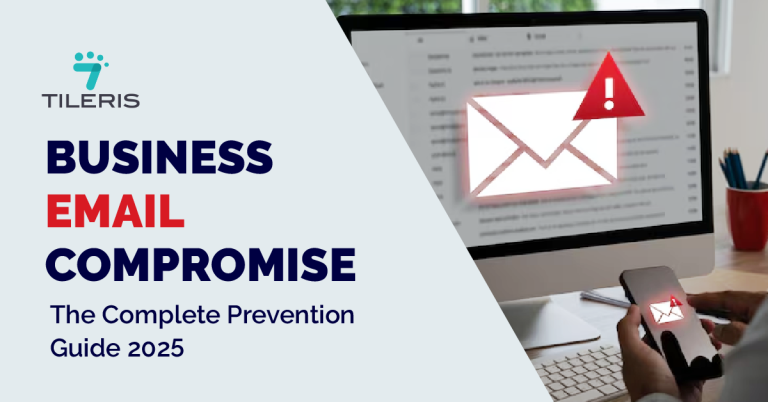Android Email Encryption: Securing Mobile Messages
Introduction
If you’re like most people today, your phone is practically a pocket office. You send job applications, financial documents, personal conversations, and maybe even medical info through email, often without thinking twice.
But here’s a hard truth: most of those emails aren’t as private as you assume. Unless you’re encrypting them, they’re vulnerable. That’s where Android email encryption becomes not just useful, but essential.
Now, you don’t need to be a cybersecurity expert to get started. In fact, Android gives you more options than ever, both built-in and through third-party tools to lock down your inbox and take control of your privacy.
This article will walk you through how email encryption works on Android, which tools to trust, and how to make it a part of your everyday communication habits.
Why Encrypt Emails on Android?
Think of regular email like a postcard. Anyone handling it can read what’s written. Encryption turns that postcard into a sealed envelope that only the recipient has the key to open.
The issue is that email, by design, was never built for privacy. Over the years, technologies like TLS (Transport Layer Security) have added protection during transmission, but that’s only partial. It keeps the message secure while in transit, but once it lands on your mail server or the recipient’s inbox, it’s often wide open.

Now, add mobile risks into the equation. Using public Wi-Fi, syncing multiple email accounts, or even losing your phone can leave sensitive messages exposed. That’s why encrypting email directly on your Android device is a smart move, not just for tech geeks, but for anyone who values privacy.
What Are Your Encryption Options on Android?
Android doesn’t come with full email encryption built into the operating system by default. But that doesn’t mean you’re stuck. You’ve got two clear paths: use apps that offer native encryption support or bring in third-party tools that can handle encryption for you.
Native Options: What Android Offers Out of the Box
If you’re using Gmail on Android which most people are, you might assume it’s encrypted. And it is, to an extent. Gmail uses TLS to secure messages in transit between servers. This means your emails are safe from most eavesdropping during delivery. However, Google can still read the contents. So can any third party who gains access to your inbox.
For people using Google Workspace or Microsoft 365, there’s support for a more advanced method called S/MIME (Secure/Multipurpose Internet Mail Extensions). This is real email encryption, but it’s mostly designed for corporate environments. You’ll need digital certificates installed, and often your IT department has to set it up for you.
In other words, unless you’re on a managed enterprise account, Android’s native support for end-to-end encryption is limited. Which leads many users to explore third-party apps that specialize in privacy.
Third-Party Apps That Actually Work
If you’re serious about email privacy, your best bet is to switch to an app that was built with encryption at its core.
One of the most popular options is Proton Mail. Based in Switzerland, Proton Mail is known for offering end-to-end encrypted email by default. When both you and your recipient use Proton, your emails are automatically secured. Even Proton itself can’t read them. The Android app is clean, user-friendly, and works just like any other email client, except safer.
Another option is Tuta, which goes a step further by encrypting not just the email content but also metadata like subject lines and attachments. Like Proton, it offers free and paid plans, and the Android app is fully functional out of the box.
If you’d rather keep your existing Gmail or Outlook address, you’ll need to use an encryption method called PGP (Pretty Good Privacy). It’s been around for decades and is extremely secure, but it’s not exactly beginner-friendly.
To make PGP usable on Android, you’ll typically need two apps: K-9 Mail (an open-source email client) and OpenKeychain (a key management tool). K-9 Mail integrates with OpenKeychain so you can send and receive encrypted messages once your keys are set up. It takes a little time to learn, but once you get the hang of it, it’s powerful and flexible.
Getting Started Without the Headache
If you’re overwhelmed by terms like “key pairs” or “digital certificates,” you’re not alone. The good news is, many apps have simplified this process.
With Proton Mail or Tuta, encryption happens behind the scenes. You sign up, verify your email, and you’re good to go. These services handle key generation and exchange without forcing you to dig into the technical weeds.
For those going the PGP route, OpenKeychain walks you through creating your keys. It might feel a bit like setting up 2FA for the first time, strange at first, but straightforward once you follow the steps. Once set up, the encryption and decryption process within K-9 Mail becomes automatic for messages sent to and from contacts who also use PGP.
It’s worth noting that encrypted messages only work end-to-end if both parties are using encryption. If not, the message may default to plain text, or in some apps, you may be prompted to create a password for the recipient to open the message via a secure link.
Best Practices to Keep Your Email Secure on Android
Encryption is important, but it’s not a silver bullet. You still need to follow basic security hygiene to stay safe.
First, always keep your apps and operating system updated. Many security flaws get patched quietly, and using old software can undo even the strongest encryption.
Second, enable screen lock and biometrics on your phone. It might sound simple, but a PIN or fingerprint can prevent someone from accessing your inbox if your device is lost or stolen.
Third, use strong, unique passwords for your email accounts and turn on two-factor authentication (2FA). If an attacker can log in to your account, encryption won’t help.
Finally, be cautious about phishing emails. Just because a message is encrypted doesn’t mean it’s safe. Encryption protects the content, but it doesn’t verify the intent behind the message. That’s why combining encryption with verified contacts and digital signatures (available in PGP and S/MIME) is the most secure setup.
The Bigger Picture
At the end of the day, Android email encryption isn’t just about locking down your messages. It’s about control. It’s about making sure that what you say, send, and share is only seen by the people it’s meant for.
Yes, the setup may take a bit of effort, especially if you’re using your existing Gmail address with PGP. But once it’s done, it’s largely seamless. And the peace of mind is worth it.
As digital privacy becomes more mainstream, more apps and platforms will likely make encryption the default. But for now, taking that step on your Android device is entirely in your hands.
Conclusion
If you’ve been putting off securing your email because it seemed too complicated, now is the time to act. With intuitive apps like Proton Mail and Tutanota, and powerful open-source tools like K-9 Mail and OpenKeychain, Android email encryption is more accessible than ever.
Whether you’re a lawyer, a journalist, a student, or just someone who values their personal space online, encrypting your emails is one of the smartest, and simplest, ways to keep your mobile messages safe. Remember: privacy isn’t about hiding. It’s about protecting what matters.
Solidify your digital defenses with Tileris!
Download your free Security Checklist today! It’s packed with simple, actionable steps designed to fortify your online presence, perfect for anyone keen on understanding and implementing solutions like TLS, S/MIME, or PGP for their Android email.
Need a bit more personalized guidance?
Request a free consultation! Our Tileris team is ready to walk you through your email encryption options, helping you pinpoint the ideal strategy for your unique needs.
Curious how modern AI can streamline your security efforts?
Request a demo to witness Tileris AI Agents in action. Just drop us a note through our contact form, and we’ll unveil what smarter, more intuitive security truly looks like.





